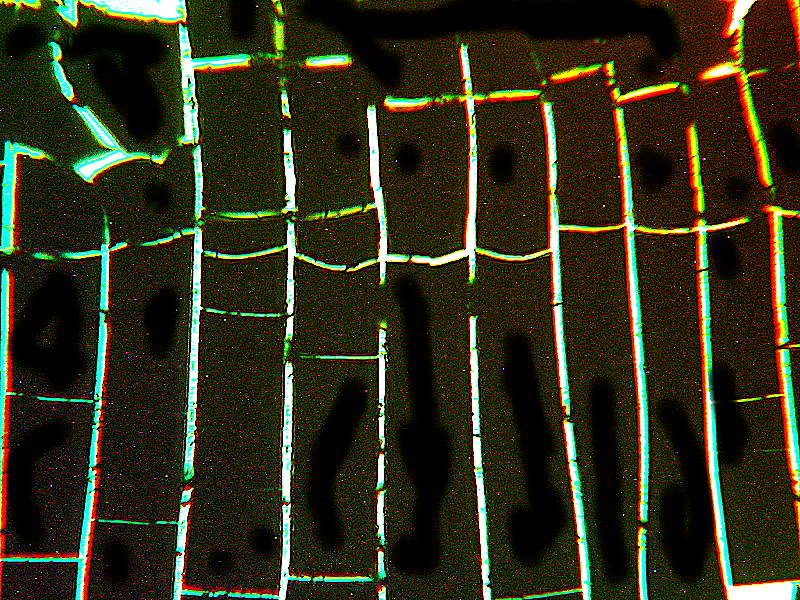
|
An Alphabetic Album Of Crystals N-Z
Richard L. Howey, Wyoming, USA |
An Alphabetic Album Of Crystals A-M ...... continuing N-Z:
N is for Nigrosin which is a black, biological stain that as it dries frequently produces a crackling affect as can be seen in the image below.

However, when mixed with other substances, it can produce unusual and unpredictable results. When mixed with Urea, melted, and then remelted, some veritable marvels can occur. First, we see some rather botanical forms.
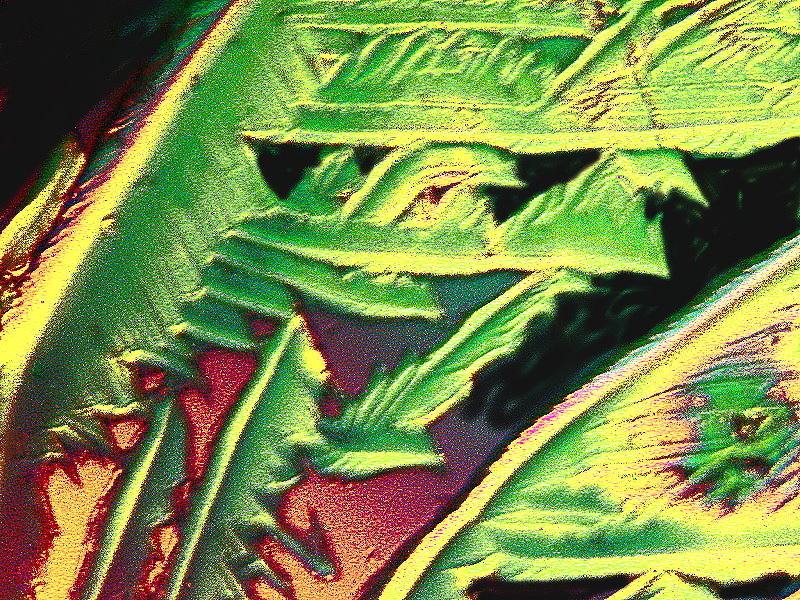
Then, a flower that’s shedding its petals in a gust of wind.
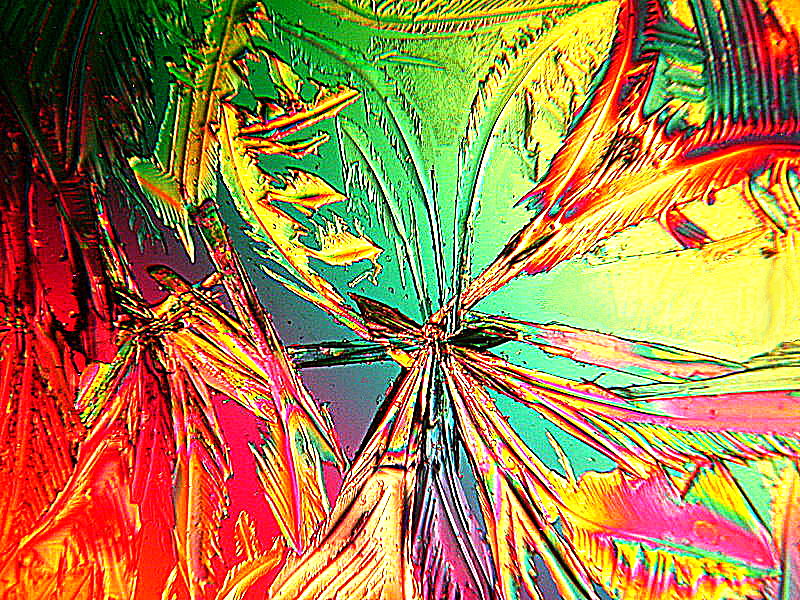
And finally, the vertebral skeleton of Dimetrodon, a precursor to the dinosaurs. The image has been altered to a monochrome to increase contrast and the background has been altered to black for the same reason.
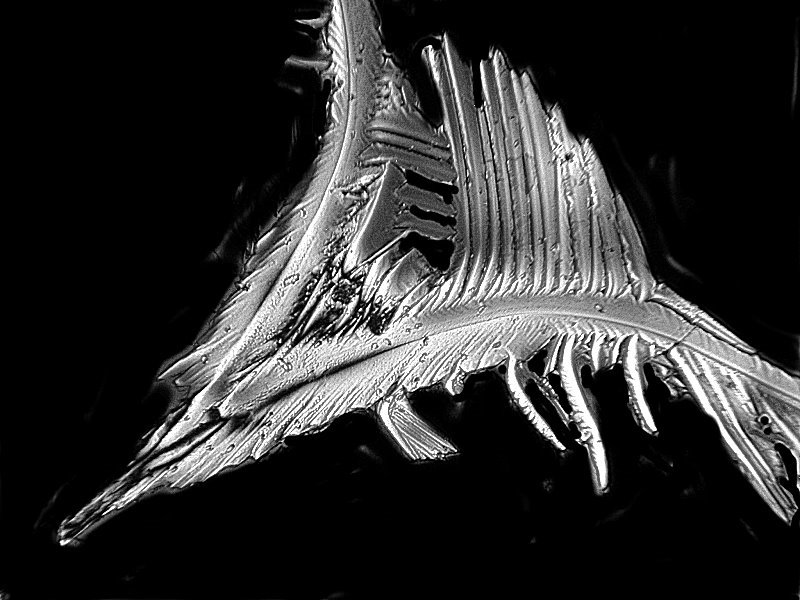
O is for Orange G, a cytological contrast stain. This is a delight to work with both in terms of its own characteristics and the variety of results when in combination with other substances. It is great fun to give a demonstration of crystal development under polarized light, especially to young people and beginners. When dissolved in 70% isopropyl alcohol and a drop it placed on a slide it begins to form crystals quite quickly, usually within a minute, and one can watch their progression across the field of view. First, I’ll show you 2 images which are simply Orange G in alcohol; the first showing typical, acicular crystals and the second which resulted from the crystals clustering around an impurity to form a micro-enclosure.
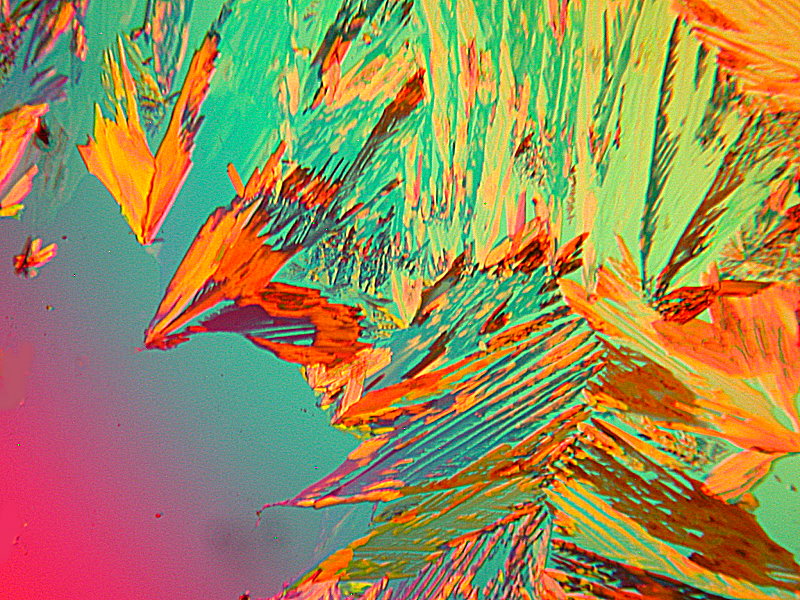
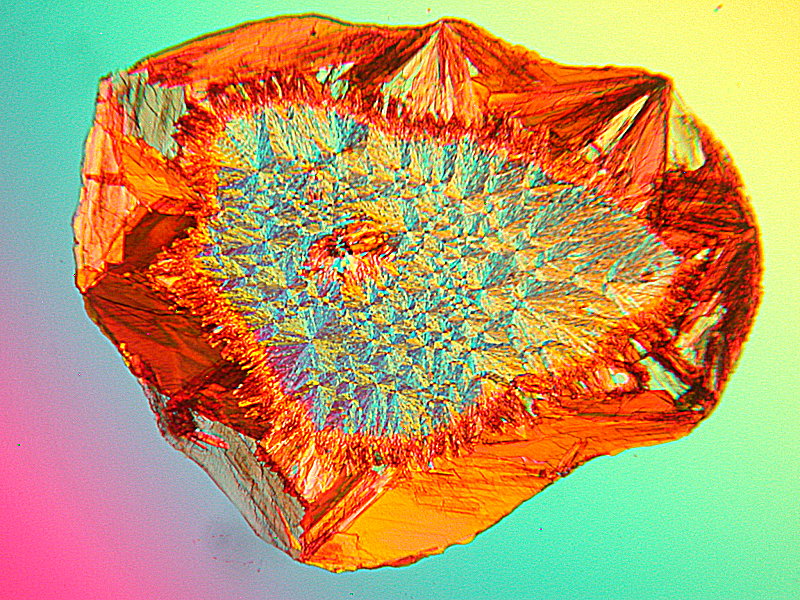
The next 4 images are a combination of Orange G, Ascorbic acid, and Urea. There are many other fascinating combinations but, for now, we’ll just settle for these. The first 2 have rough, eccentric, quasi-geometric forms in them.
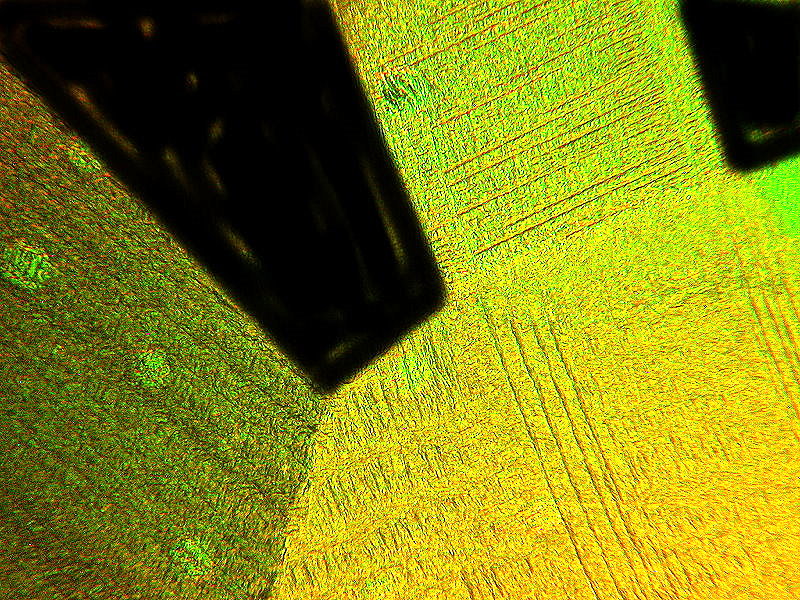
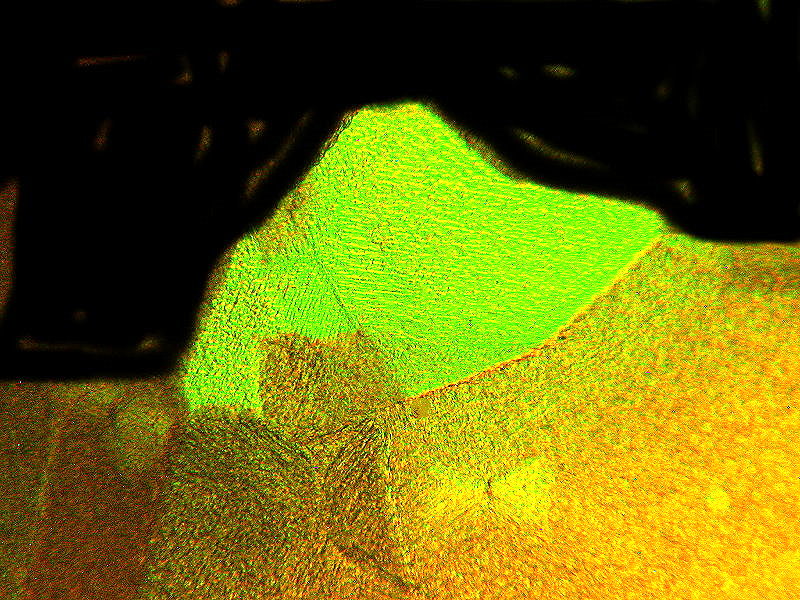
The last 3 are rather whimsical in character and the second and third are perhaps odd, curious little aliens checking us out.
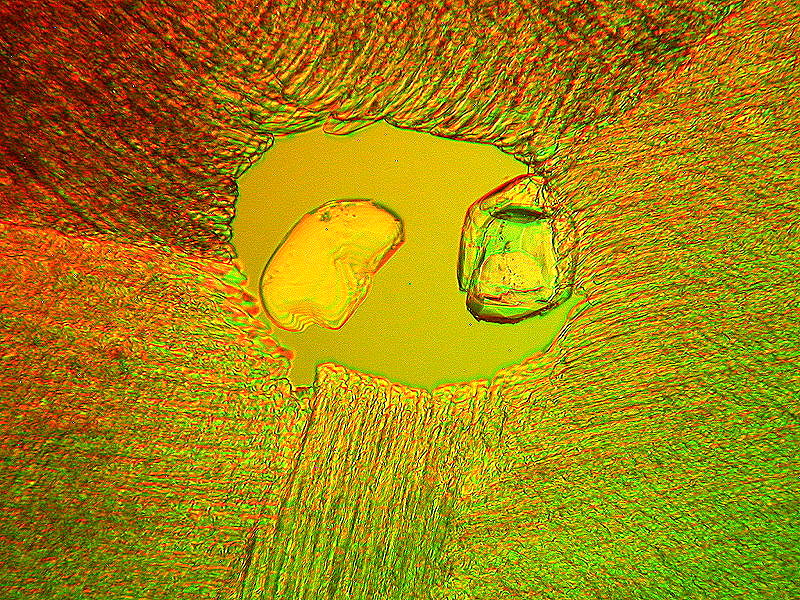
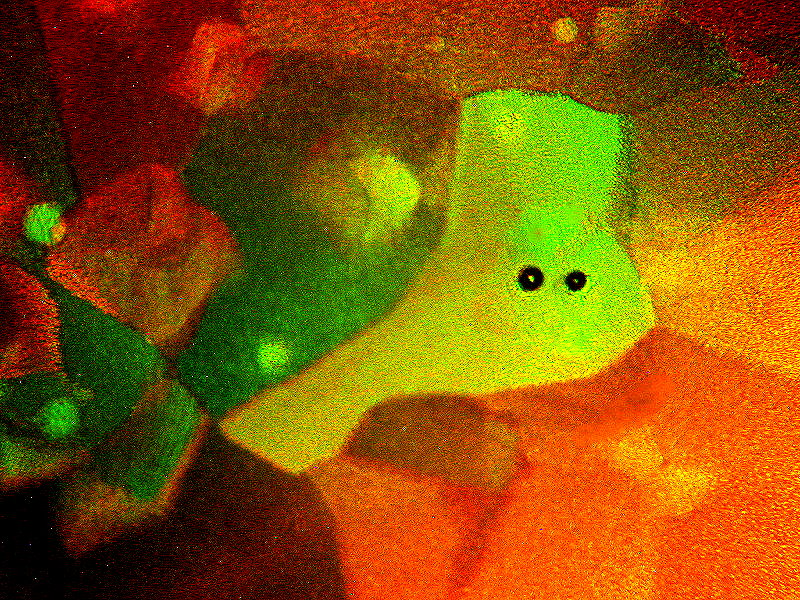
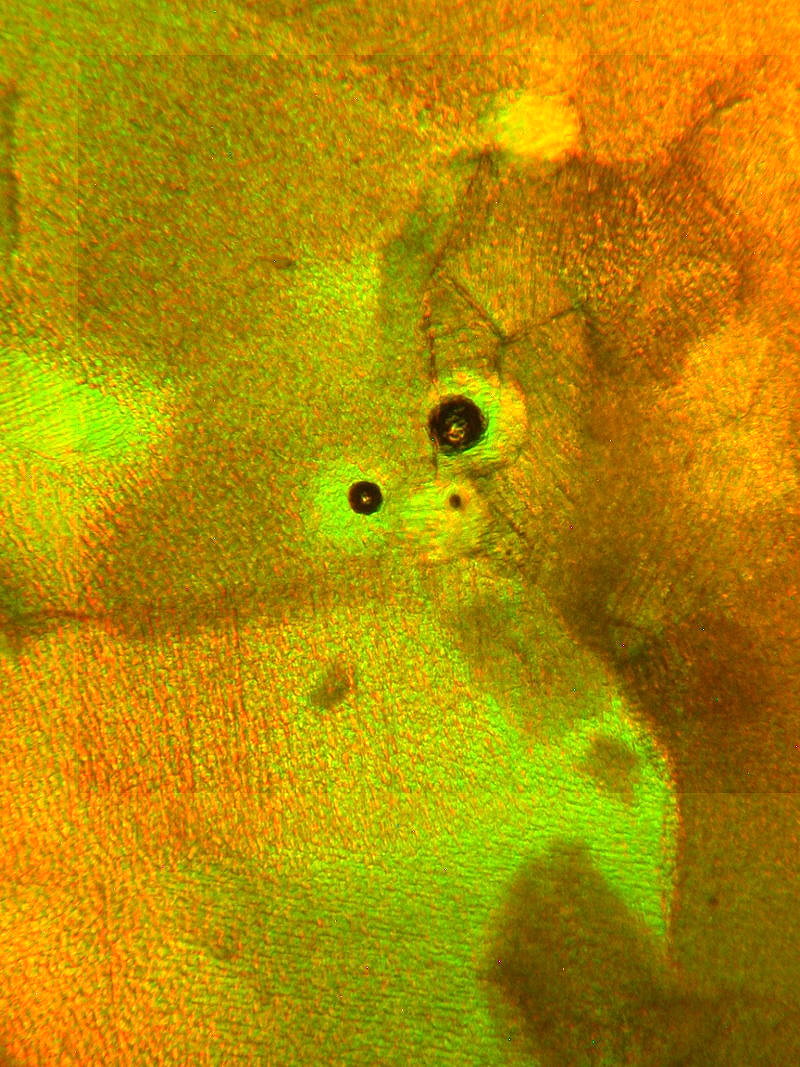
P is for Paracetamol, also known as Acetaminophen, also known as Tylenol. I suspect that additives are quite different in different compounds, but only the pharmaceutical manufacturers know and they aren’t telling except for labels with fine print that is so small that one needs an electron microscope to read it. Many people have had striking success with this compound and combinations of it and other reagents. My results have been quite modest and I need to do much more experimentation to get the kinds of results that I have seen others achieve. The first image is Paracetamol by itself, that is, not mixed with anything else, except it was dissolved in a solution of 70% isopropyl alcohol.
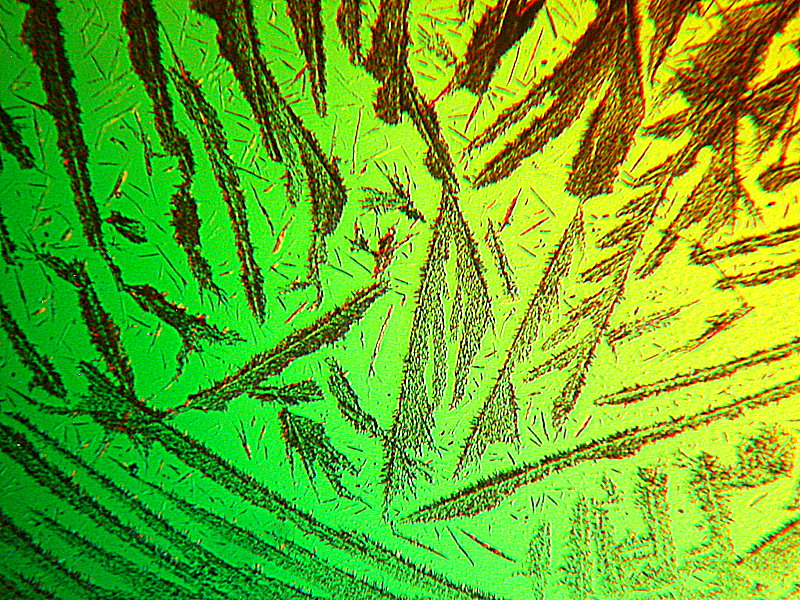
Next, 3 images of Paracetamol mixed with DMSO (Dimethyl sulfoxide which is a colorless solvent and can be mixed with a number of organic solvents and also with water. The first shows a variety of textures.
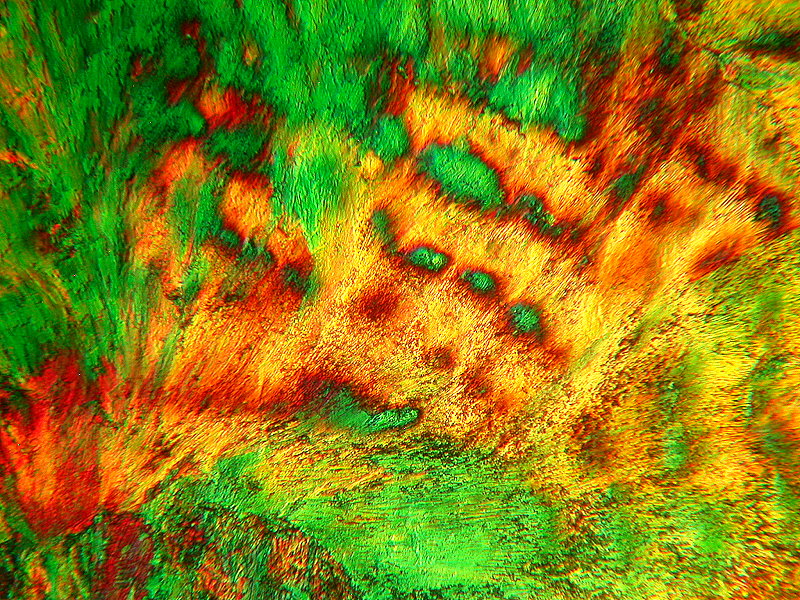
The second reminds me of the drooping branches of a large evergreen tree.
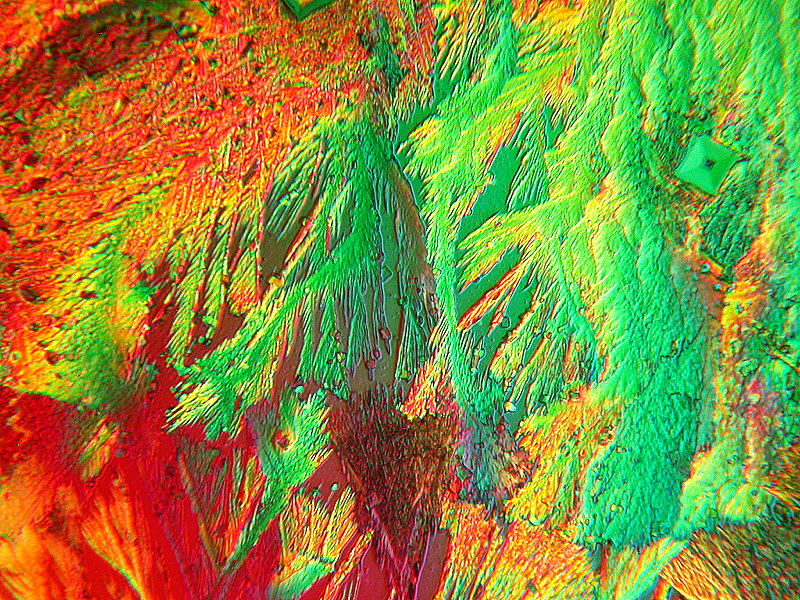
And then there are the micro-zombies attempting to escape from the drop of DMSO.
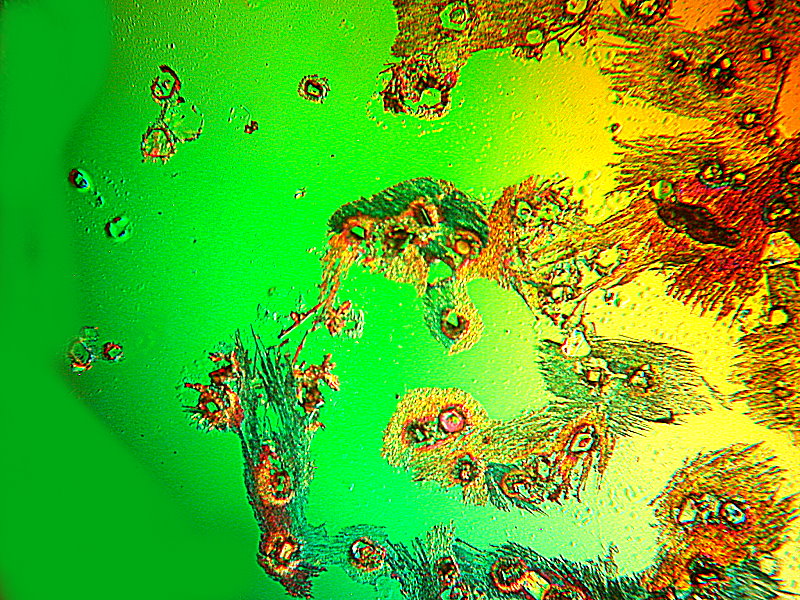
Q is for Quinine sulfate, always handy if you get malaria; although now there are newer treatments, they all have issues. Of course, the best thing is to avoid mosquitos by living in a large plastic bubble. This substance produces arborescent crystals as you as see in the 2 images below.
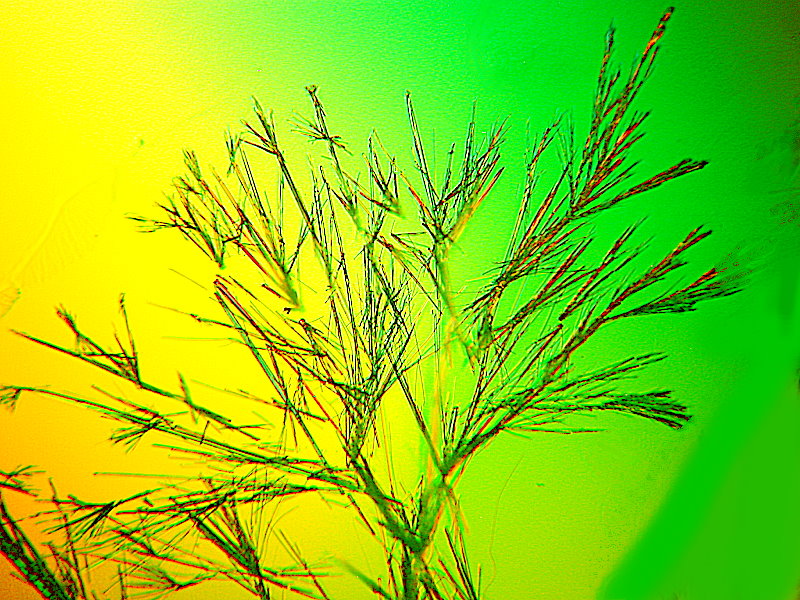
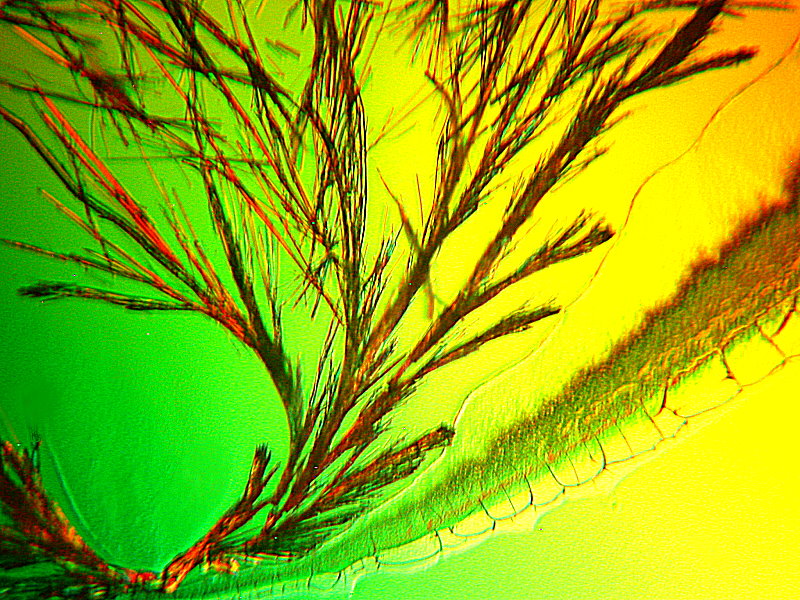
R is for Roxicet, which is a combination of oxycodone and acetaminophen. It is a painkiller, but has to be used with great caution, because it is highly addictive and can have severe interactions. I’ll show you 2 images, both of which are rather spiky, but colorful.
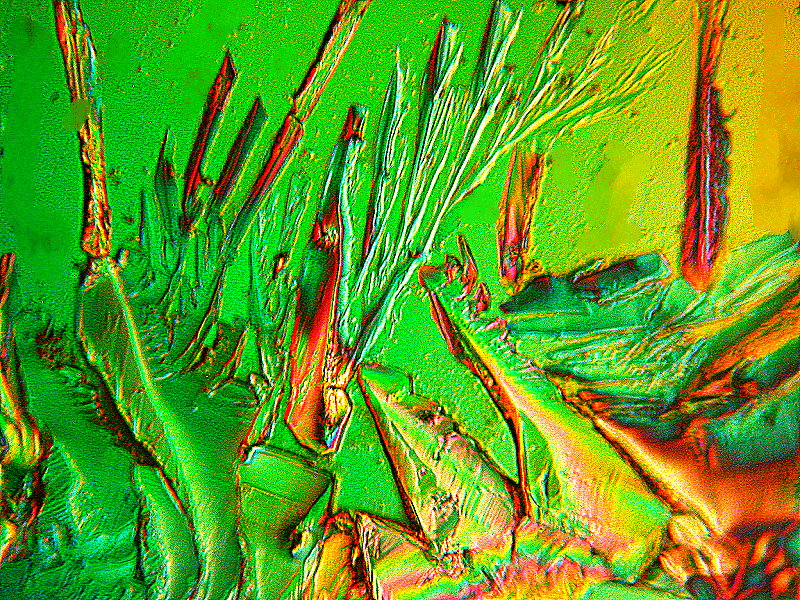
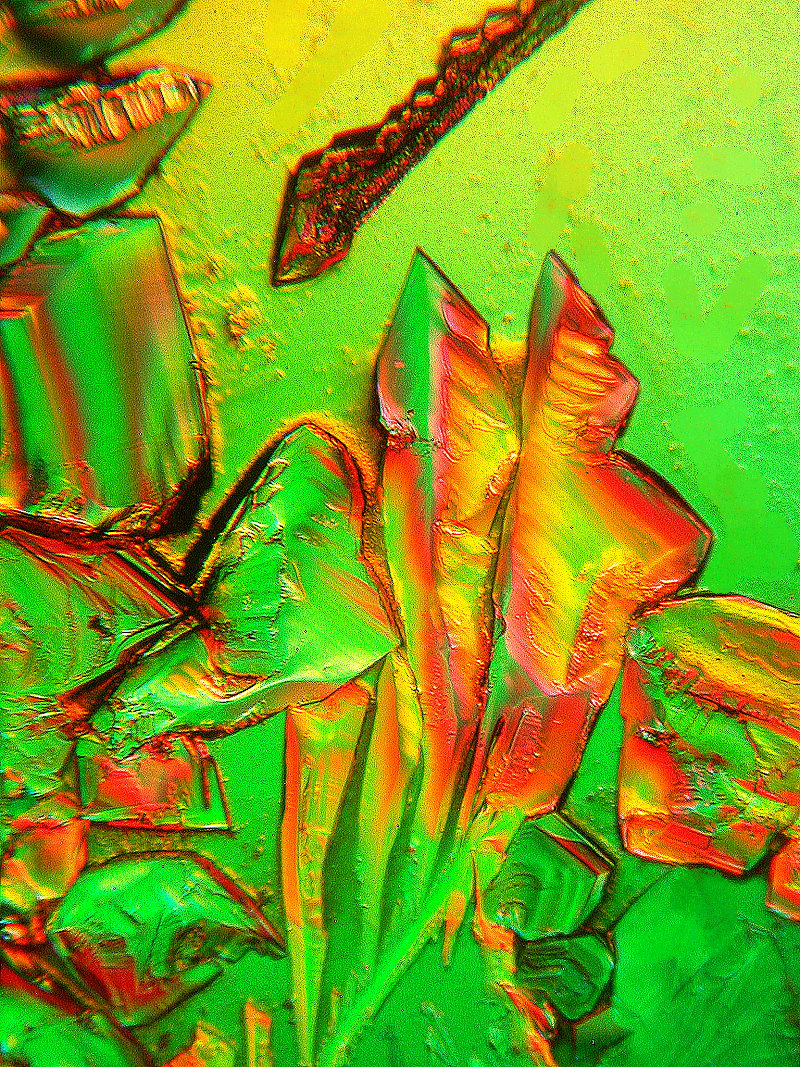
S is for Silver nitrate. In early days, this salt was used in photography, but the discovery that halide salts were much more sensitive to light led to its replacement. It was also used fairly extensively to treat various skin conditions, but has largely been replaced today by antibiotics. When mixed with various other chemicals, it can produce some quite splendid and sometimes bizarre results. I’ll start by showing you 2 images of this chemical by itself. They suggest a sort of free-flowing motion.
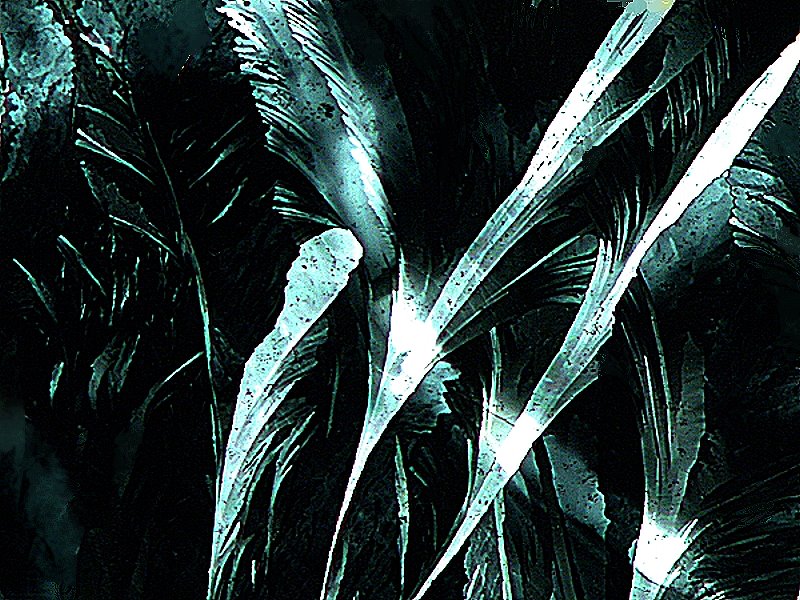
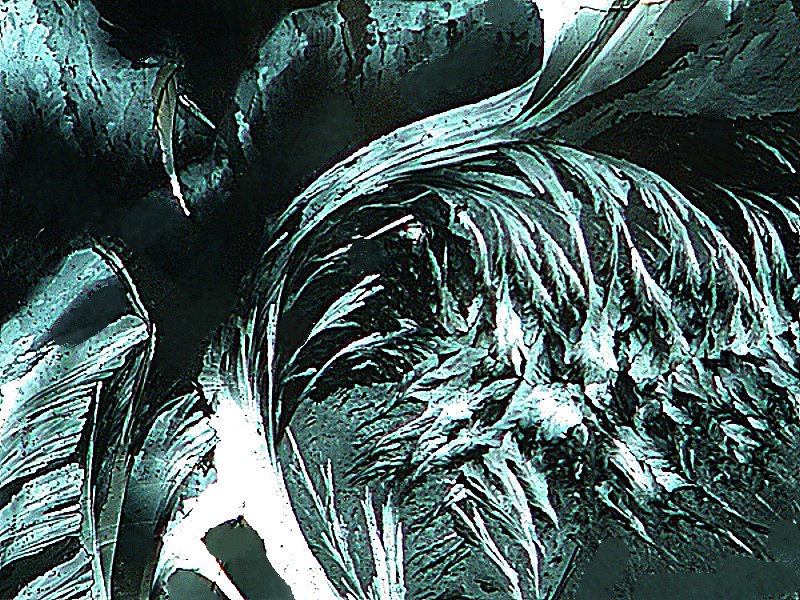
So, next let’s create a witch’s brew by adding a bit of Orange G to the Silver nitrate and a vivid brew it is; the first is a concoction of rib of wombat and the second, liver of lemur.
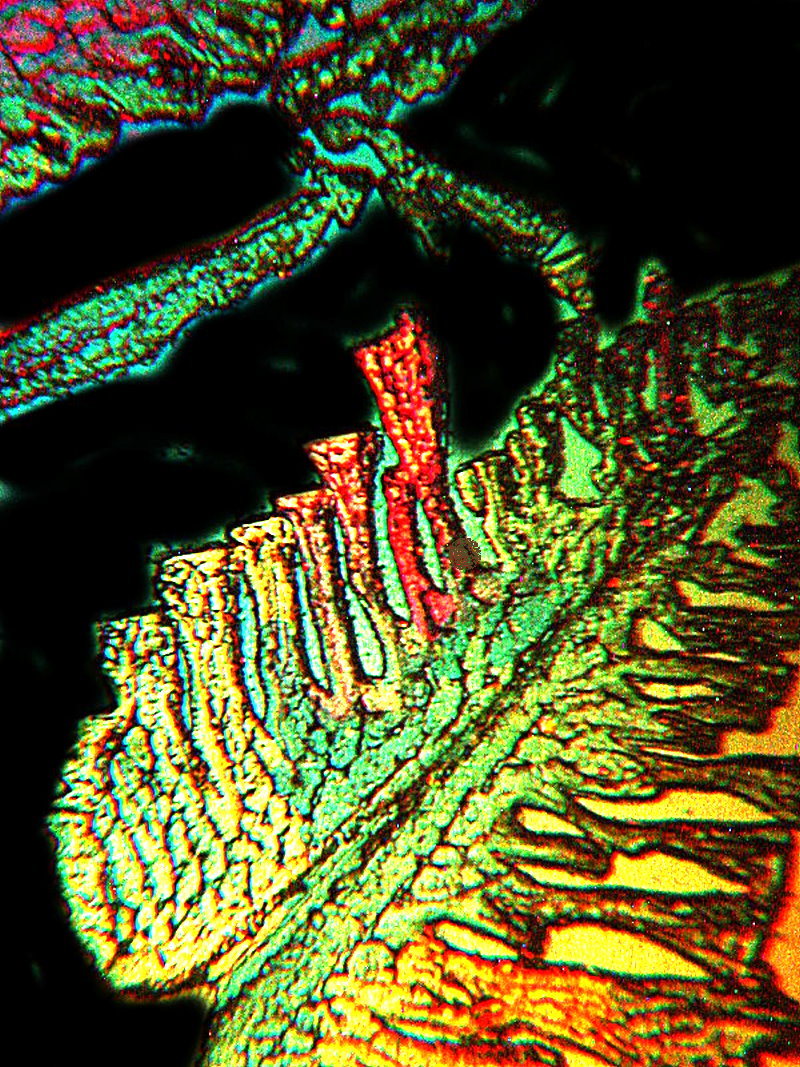
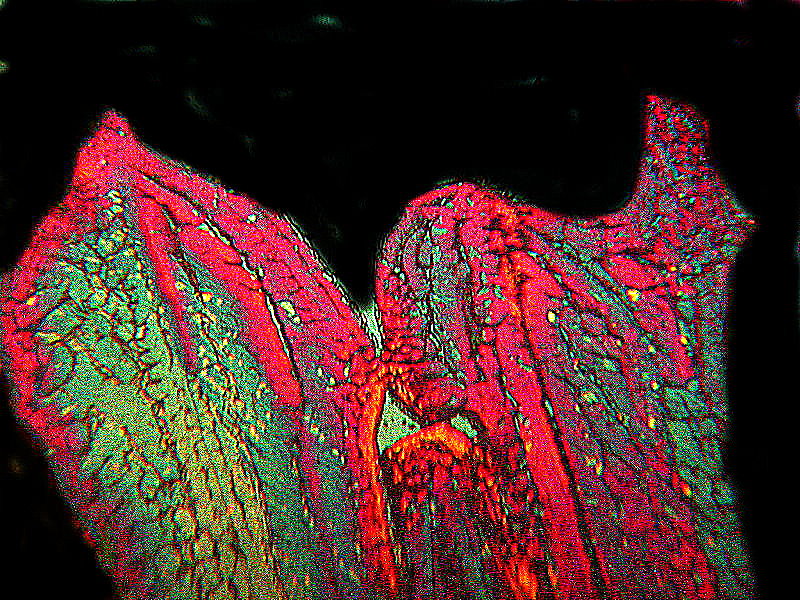
Now, if we take the Silver nitrate and add a drop of Benzoic acid, we get an alien landscape.
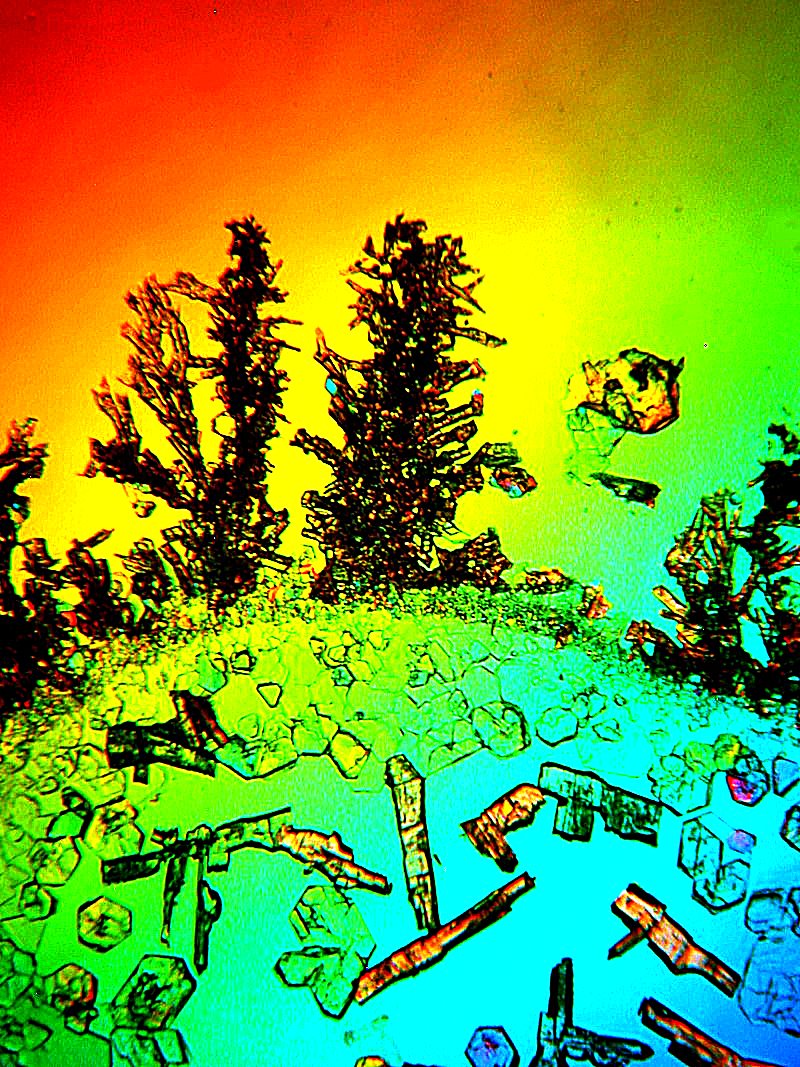
However, it’s not a planet where you would want to reside, for it’s inhabited by huge predatory leech-like annelids in the silvery sea of Ascorbic acid and Basic Fuchsin.
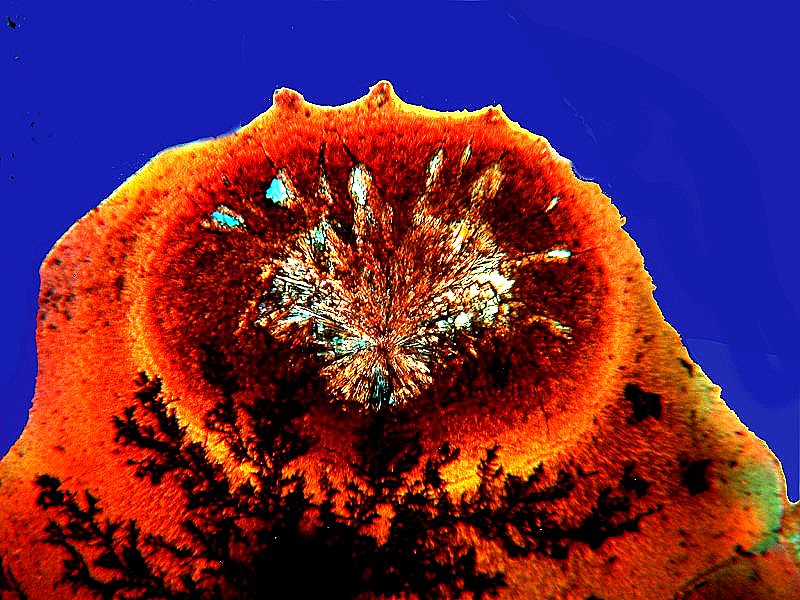
And finally, watching over everything in this sector is the large multi-lens satellite composed of Silver nitrate and Ascorbic acid.
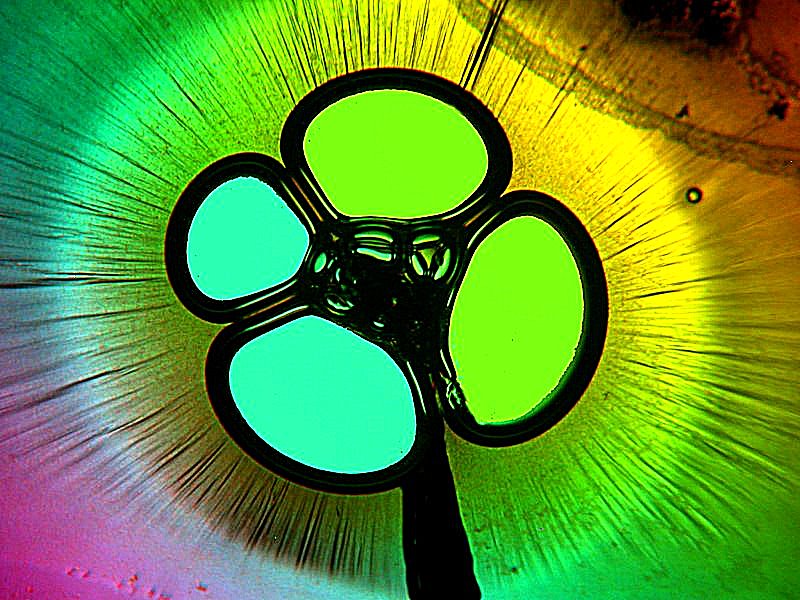
T is for Toluidine Blue, a biological stain which interacts with various chemicals to enhance their properties. I’ll show you 3 examples. The first is with Magnesium chloride, which as you may remember, produces small, wonderfully geometric crystals. In this instance, we see several lovely shades of blue.
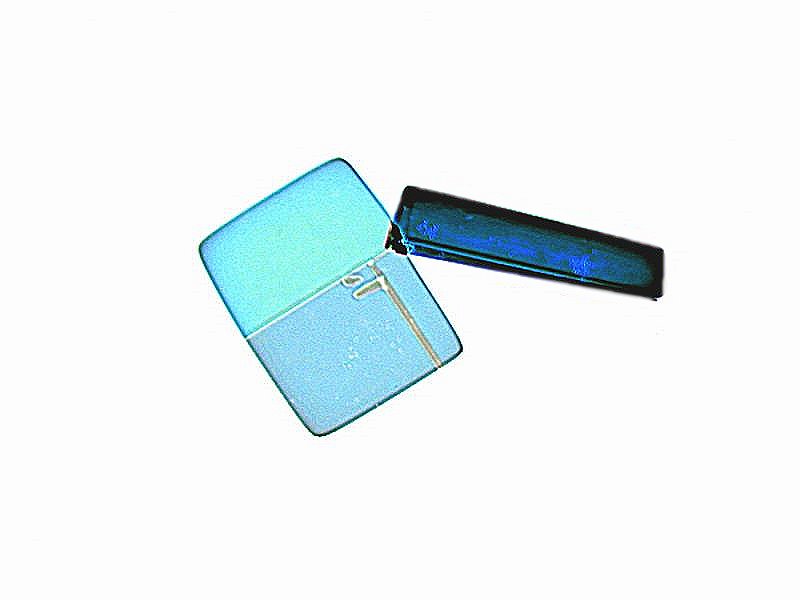
In the second case, if we mix in Ascorbic acid and MercuroClear, which is Mercurochrome without the mercury, we get a fuzzy disk.
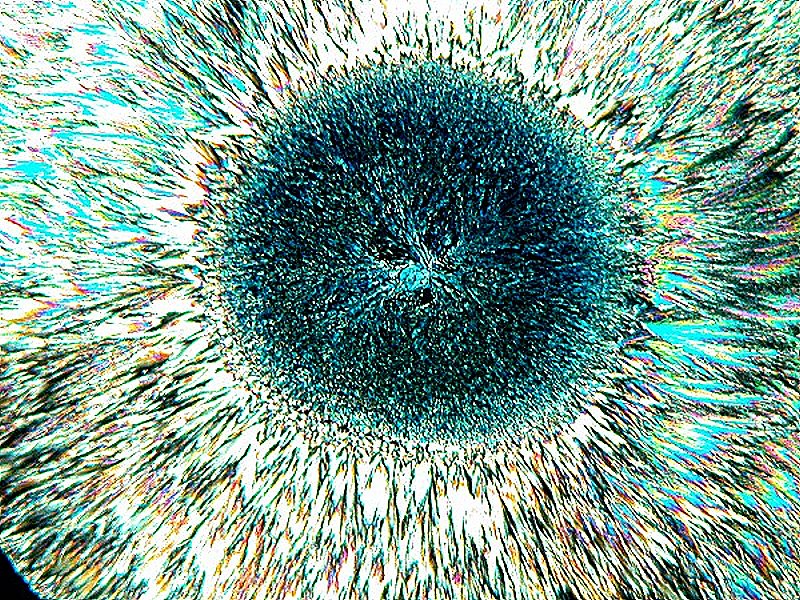
And finally, just adding Ascorbic acid produced an inexplicable result, shiny metallic disks. Go figure. Anyway, this is one of my favorite images.
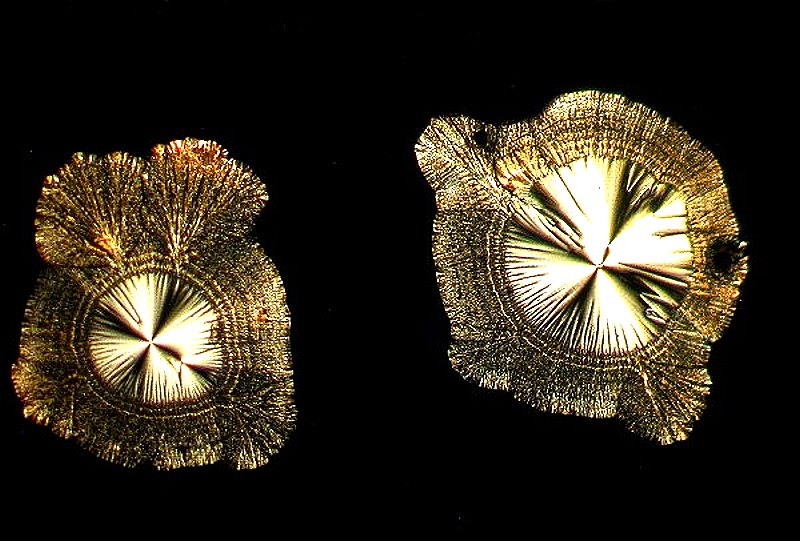
U is for Urea. It would be easy to write an entire article just devoted to Urea and the results of interaction with other reagents. Here, however, I’m going to focus on just one combination; Urea and Aluminum sulfate. (WARNING: I just might yield to temptation and in the future produce just such an article.) The first image is a disk composed of small feathery structures.
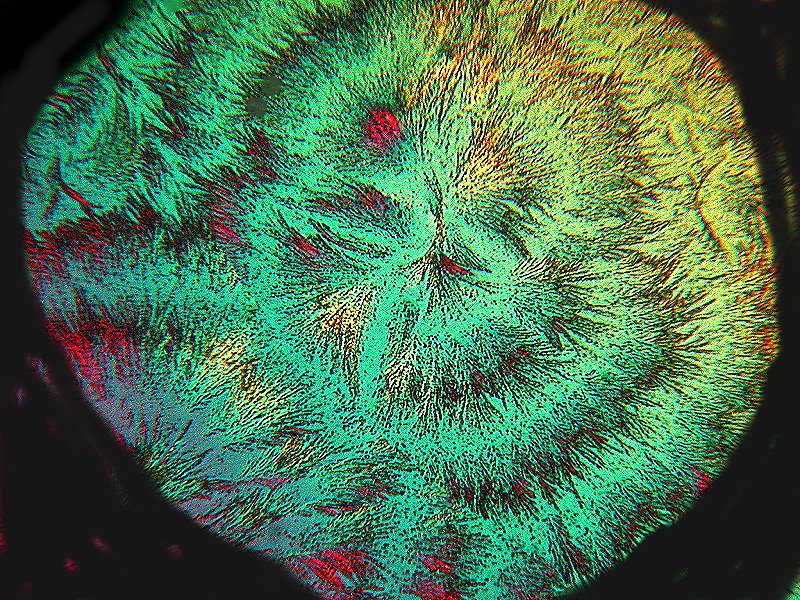
Large areas of this slide produce “feathery” images which are quite pleasing and I’ll show you 3 examples below.
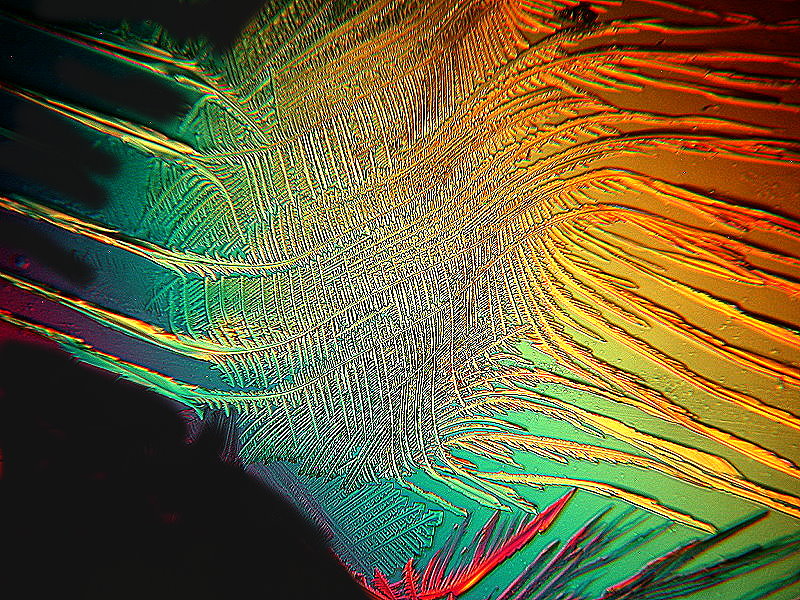
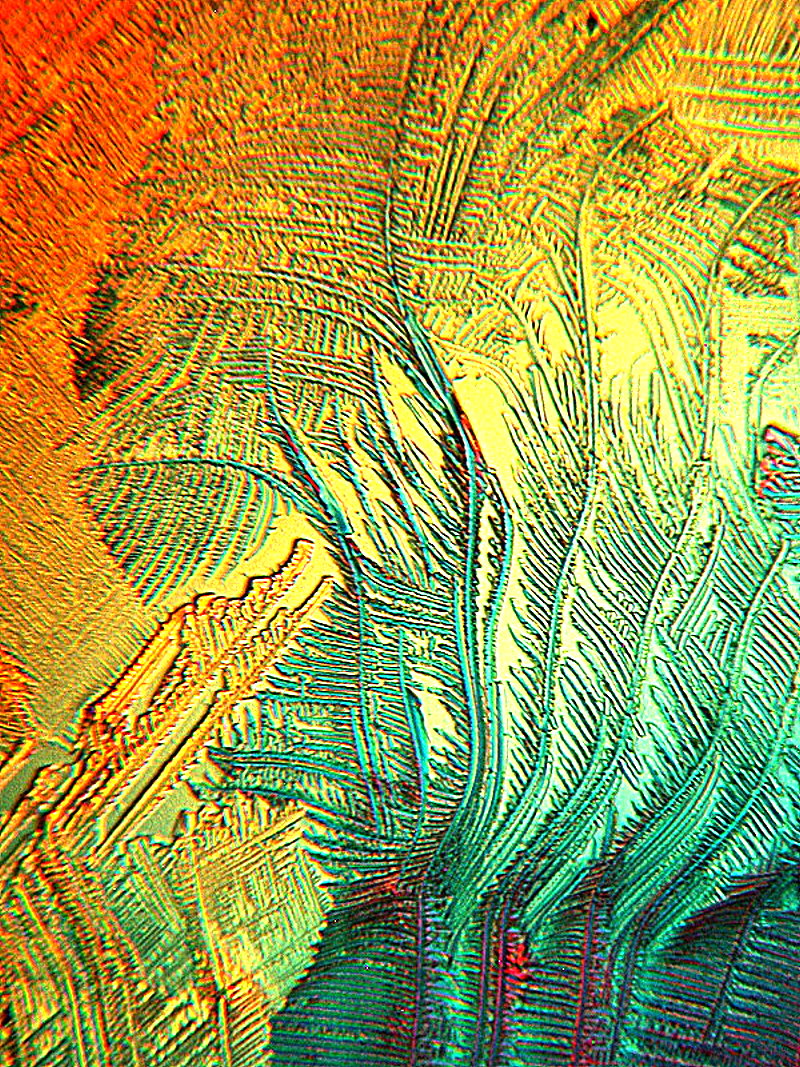
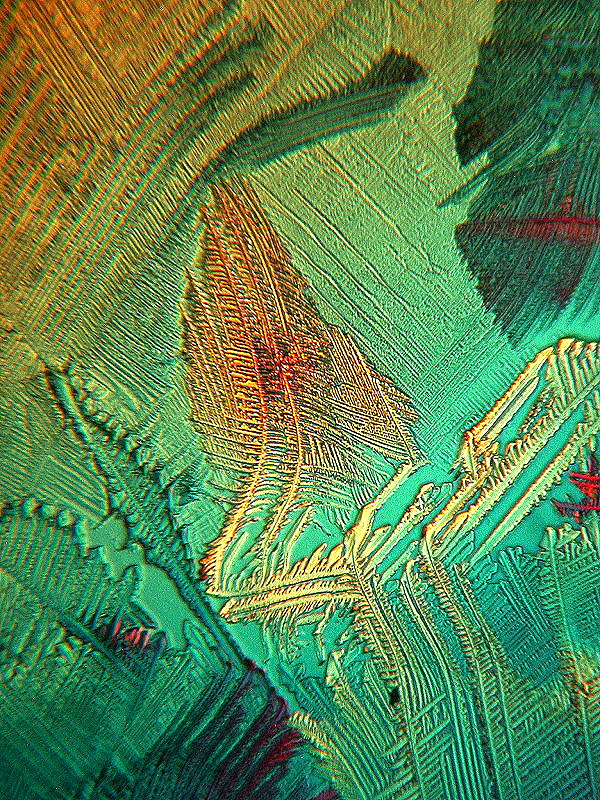
However, other portions of the slide produced startlingly different results. The first is reminiscent of fretwork on the left side and slats on the right. The second is a clump of quasi-geometric forms which look like they have collided.
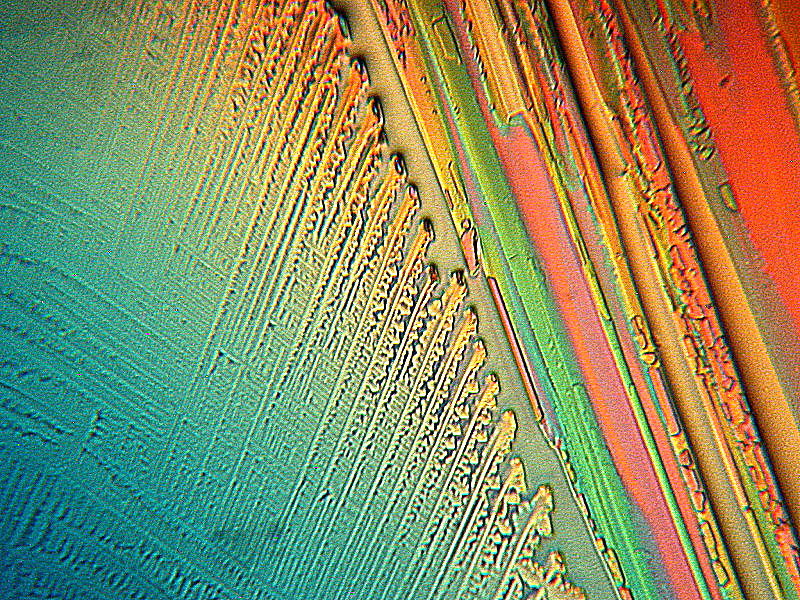
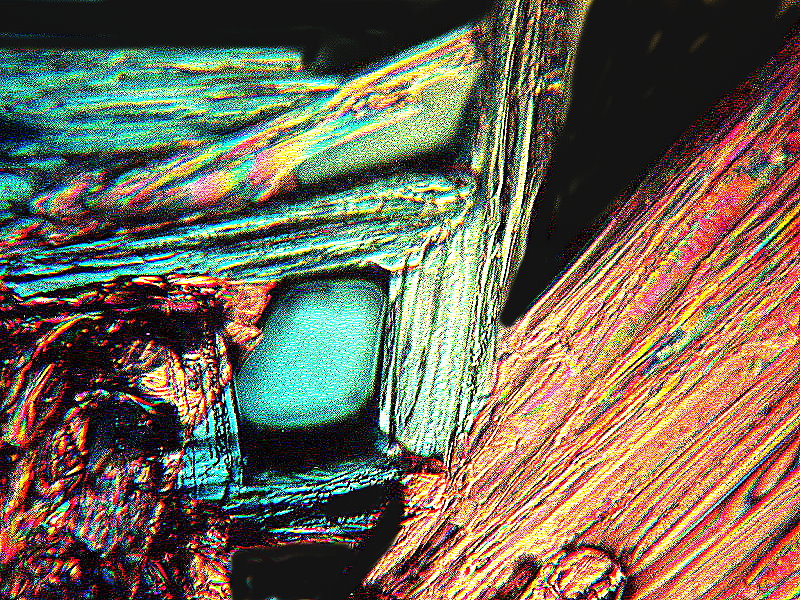
V is for Vanillin which, of course, is an extract of the vanilla bean. I have not had much success with it by itself, however, when mixed with other substances, the results are often spectacular. As with Urea, an entire article could be produced just on Vanillin combinations so, consider yourself forewarned.
First off, a floral image when mixed with Malic acid.
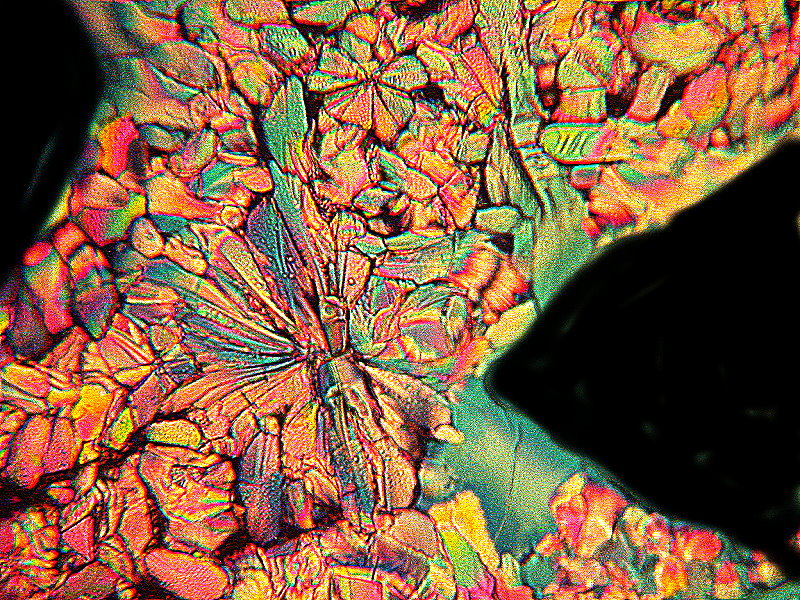
Next, 3 sharply contrasting images when mixed with Urea; the first with strong well defined crystals and the second, rather delicate and reminiscent of some of the micro-fungi.
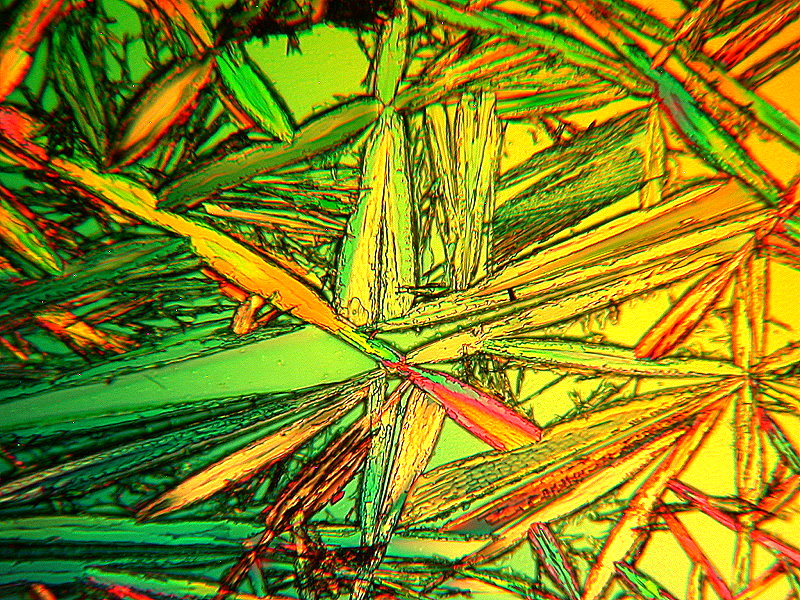
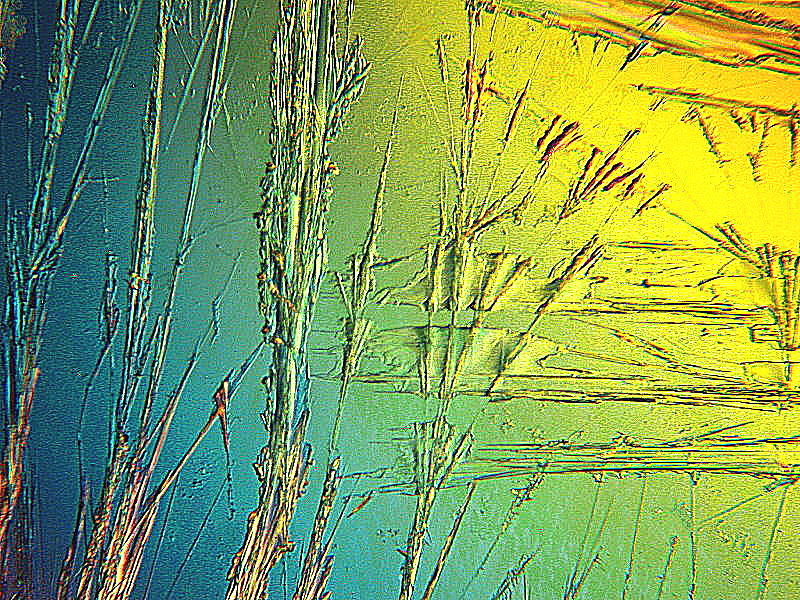
And thirdly a mixture, Vanillin, Urea, and Ascorbic acid which produces formidable thorns.
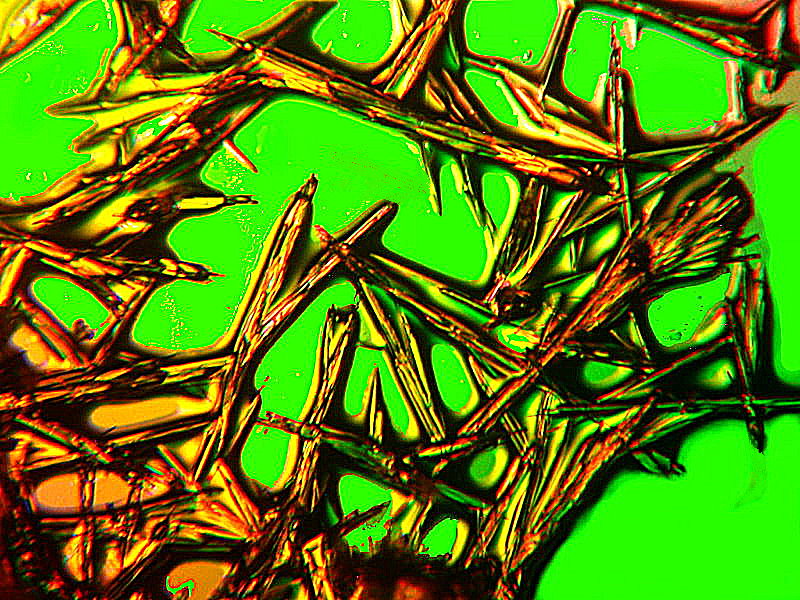
Next, I engaged in one of my more eccentric experiments and added a drop of Vanillin, a drop of sea urchin spine; that is, I crushed a bit of sea urchin spine and dissolved it in ascorbic acid. (Full transparency: actually my student helper, Sawyer Winn made the preparation for me.) From this, I obtained images of a bird perched on a branch and a spiny fish. You can observe them below.
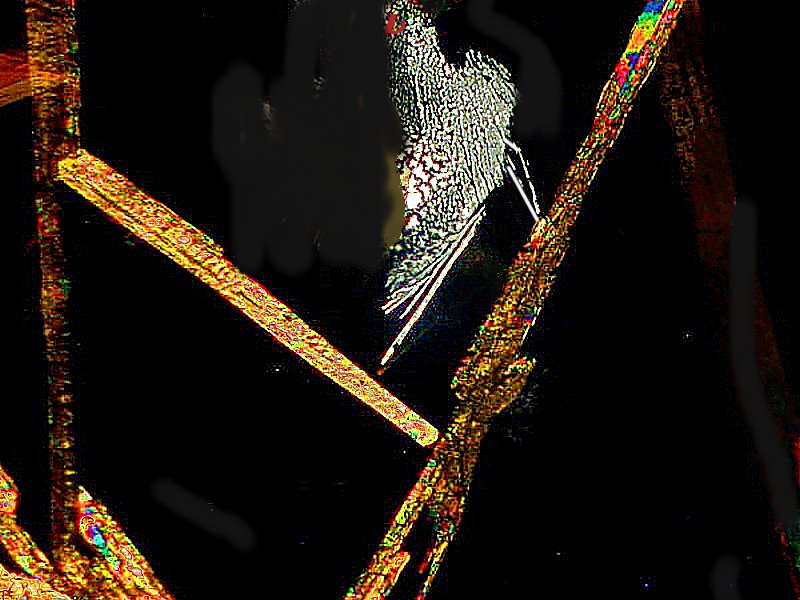
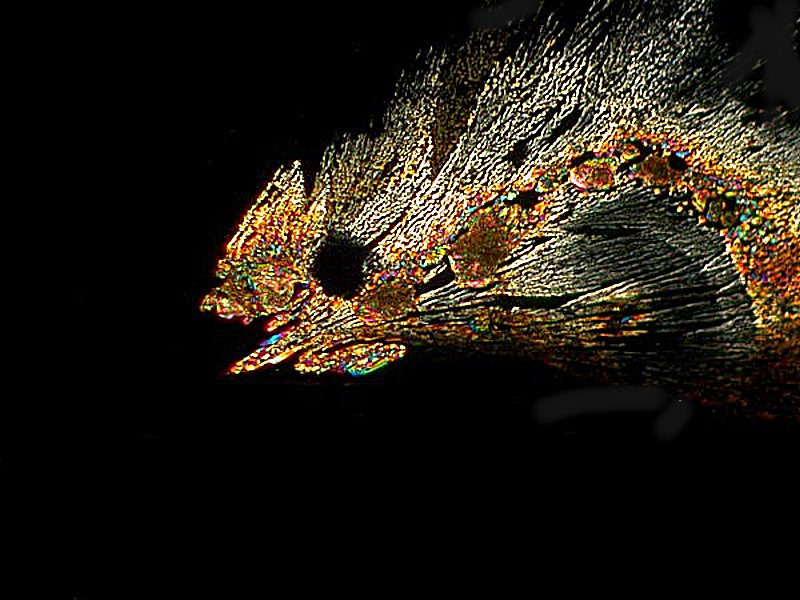
W is for Wart remover. This is a solution of 17% Salicylic acid in alcohol and ether and so must be handled with care. Don’t inhale, ingest, or heat. Besides the active ingredient, there are always, of course, those other “inactive ingredients” which often remain unspecified. Again, I find it intruiging because of the variety of forms which it can produce. Let’s start with 2 images which are rather blocky in character.
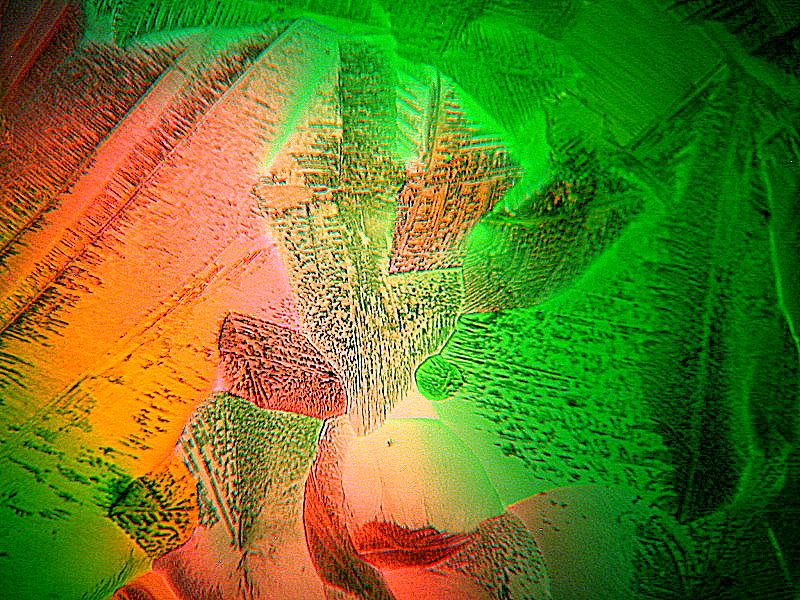
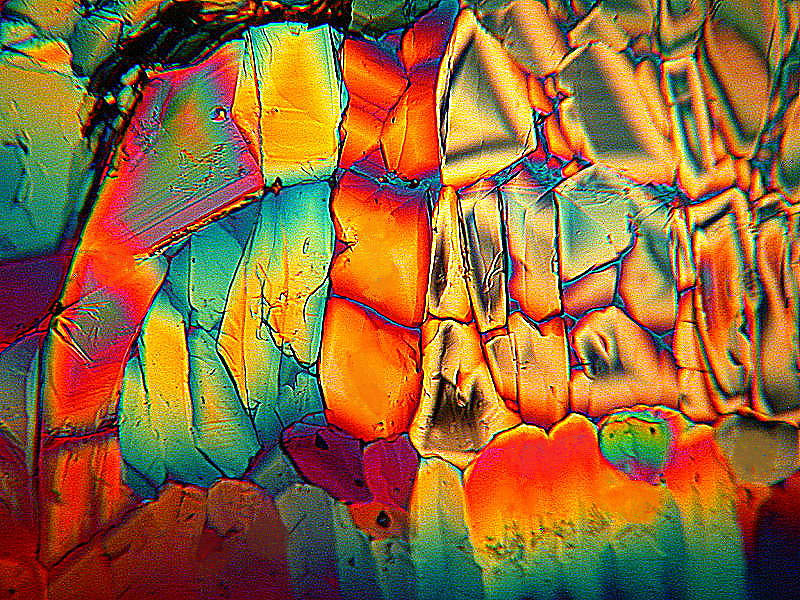
In significant contrast, the next 3 images are “feathery” in character and are ones which I quite like.
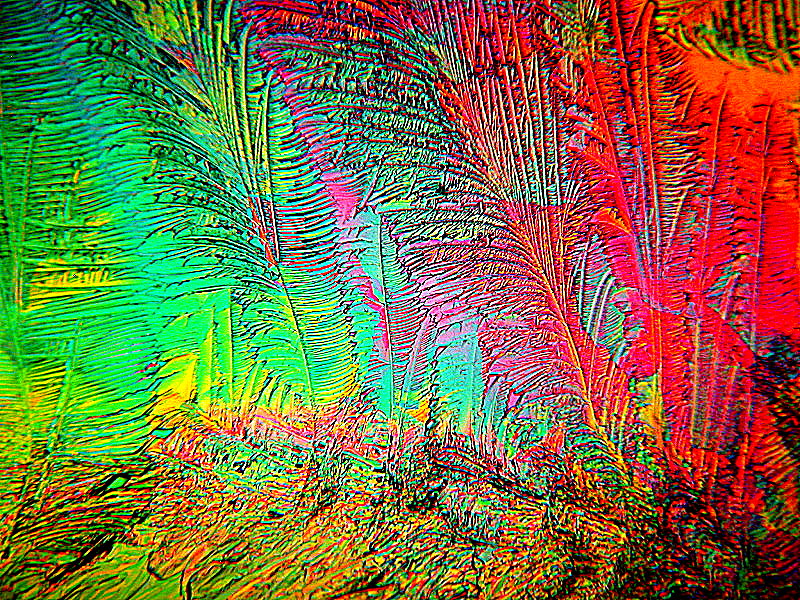
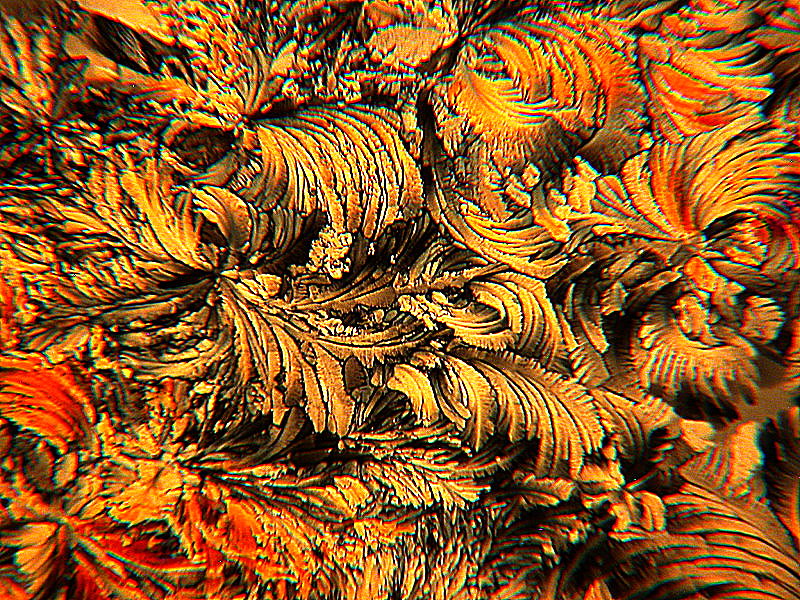
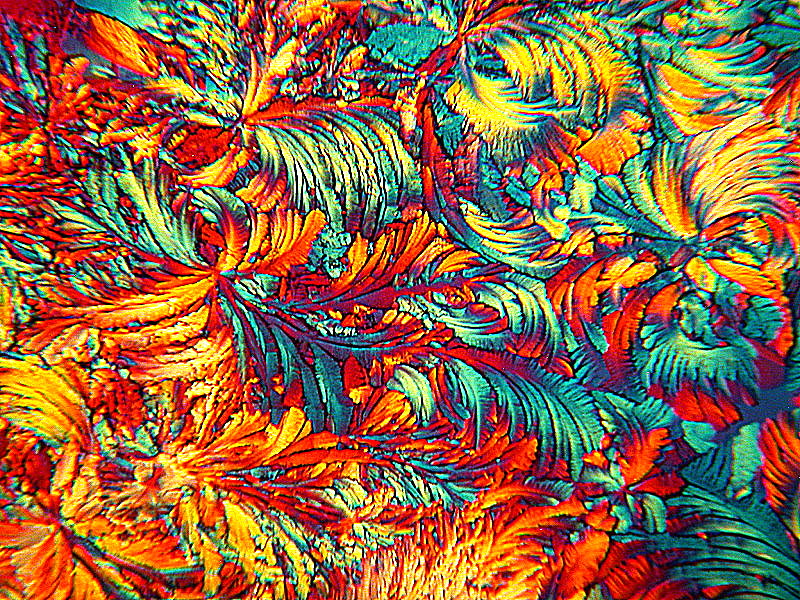
X is for Xarelto which is a blood thinner. Here I have mixed it with Magnesium chloride. Xarelto by itself doesn’t form anything interesting by way of crystals. The results are, however, not typical of Magnesium chloride by itself either, so the Xarelto is having some effect in producing these results. I will present you with 4 examples of forms which are somewhat unusual. Note in the second image that there is still some fluid around some of the crystals and this is a consequence of the fact that Magnesium chloride is hydrophilic.
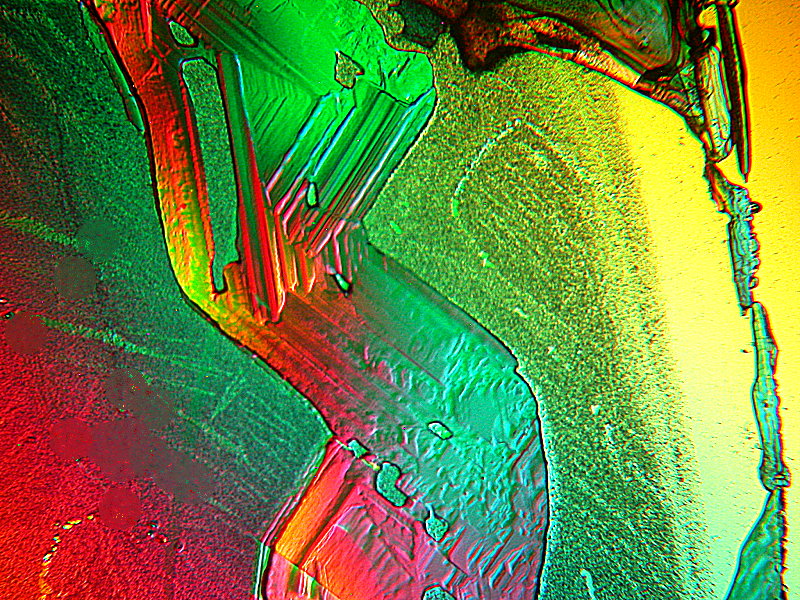
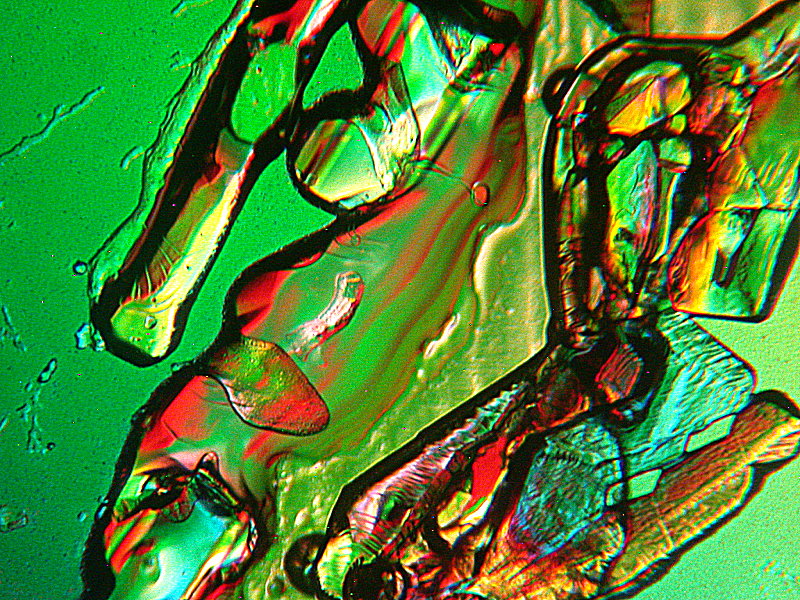
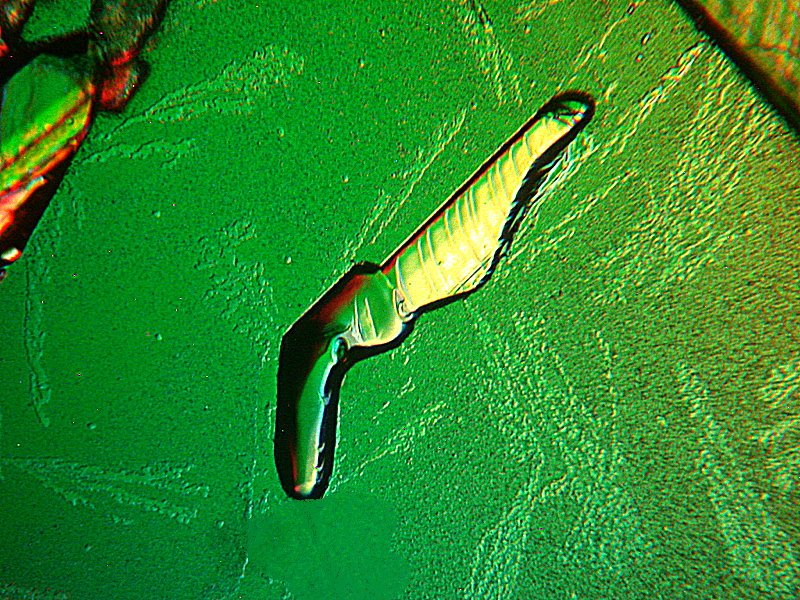
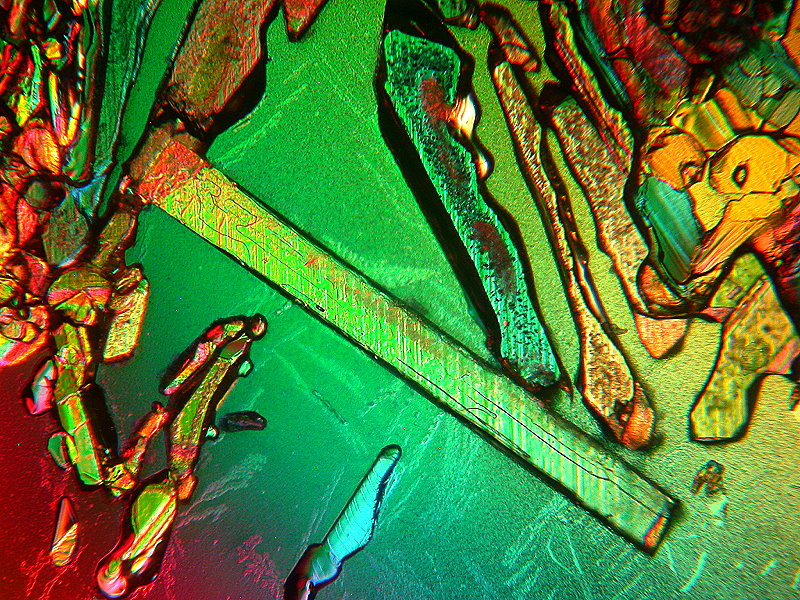
Y is for Yellow Metanil. Well actually, it’s Metanil, Yellow; but I challenge you to come up with something for “Y” that I can safely have access to at a reasonable price and convenience. It turns out that there just isn’t much that begins with “Y”. I don’t think I want to deal with Yttrium or Ytterbium, so Yellow Metanil it is. As you might have guessed from it’s name, it’s a stain and also a pH indicator in the range of 1.2 to 3.2. The stain by itself on a slide–dullsville! So, a bit of salcylic acid pepped things right up and created some wonderfully weird images. I’ll present 3 examples, the third of which is clearly some sort of alien arachnid.
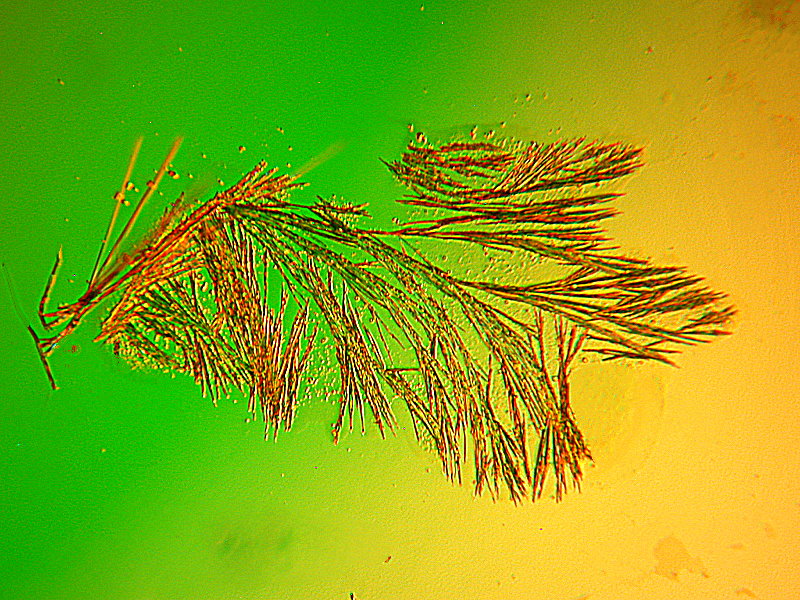
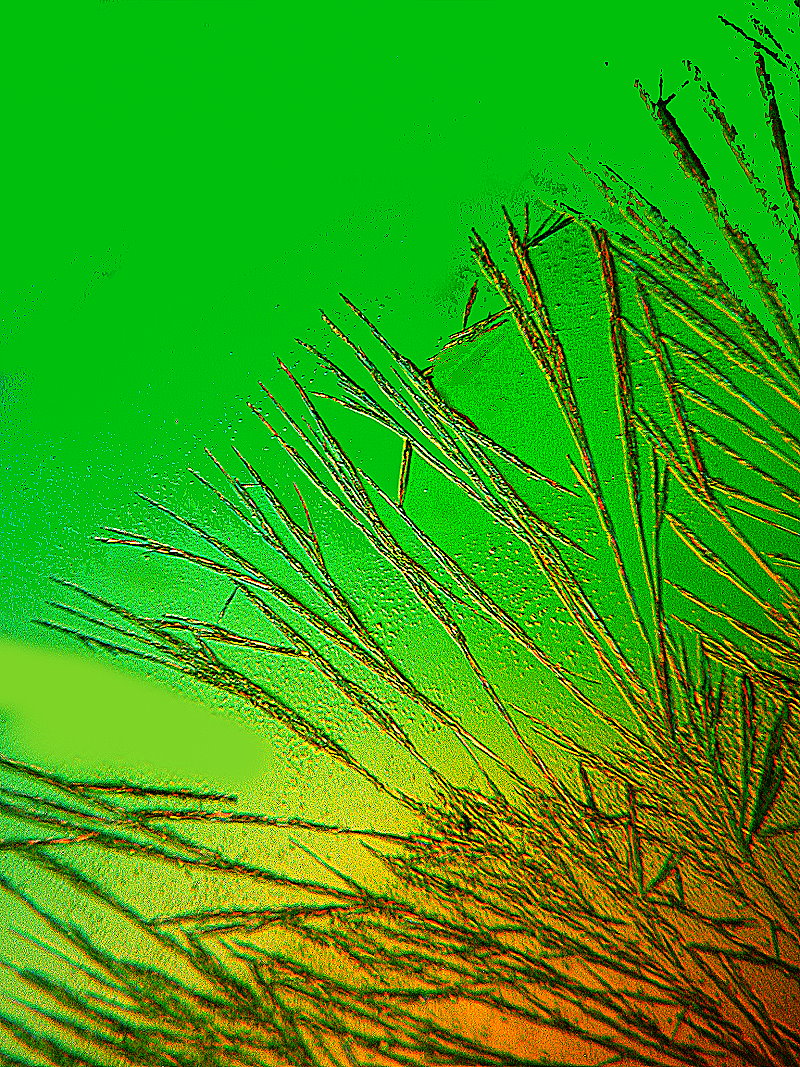
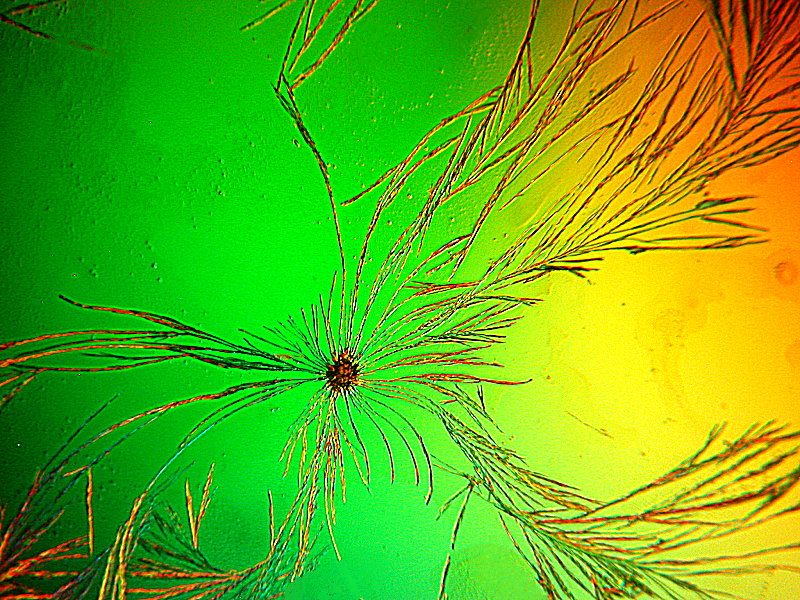
Z is for Zomax. It is a prescription painkiller which was withdrawn from the market after only 28 months due to severe allergic reactions and at least 5 deaths. I took this “medication” briefly for migraine. Fortunately, I had no severe side effects, but the few tablets that were left over are in my box of old meds. People think I’m joking when I say that I felt like a guinea pig for medications when it came to treating my severe, complex, lengthy,and frequent migraine attacks. I do, however, now have a large box of rejects which are put to use in my crystal experiments.
The Zomax is not mixed with anything else and I look at the 3 images below and wonder if these were crystals forming inside my brain. Oh well, too late to worry about it now, but my friends say that it explains a lot about my eccentric interests.
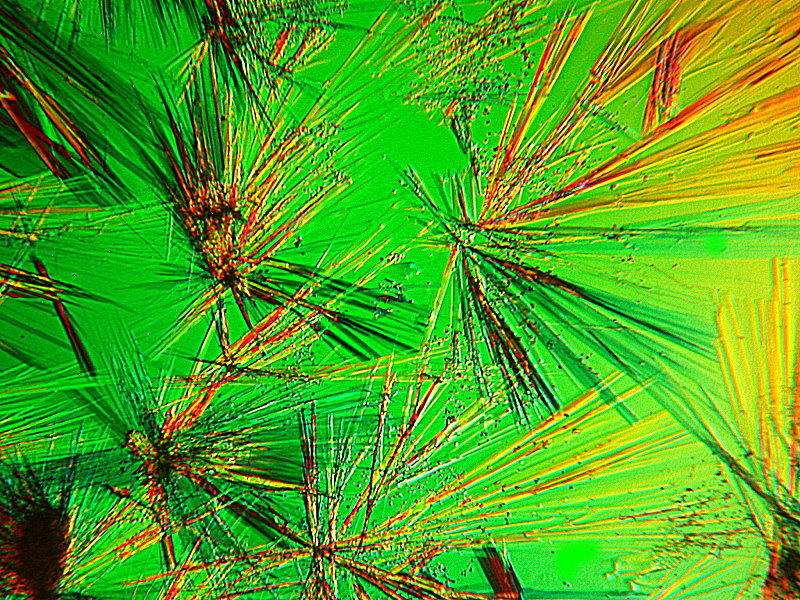
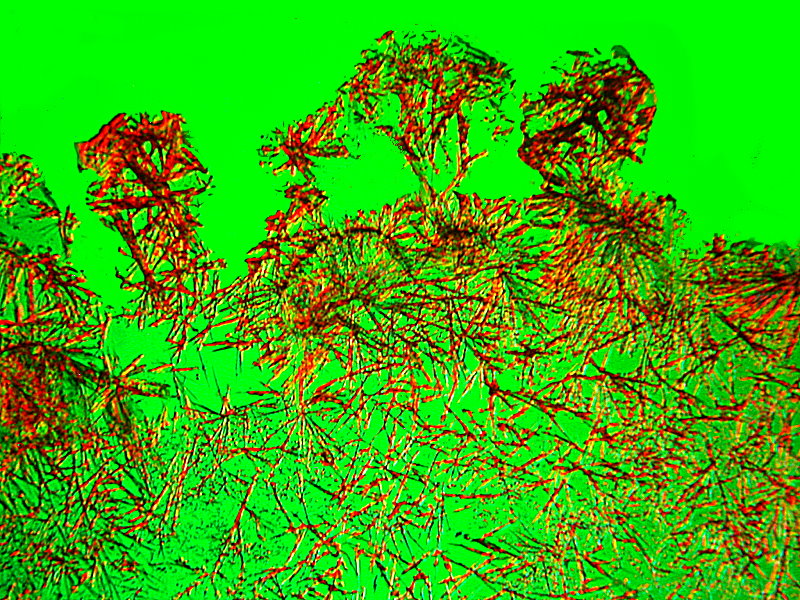
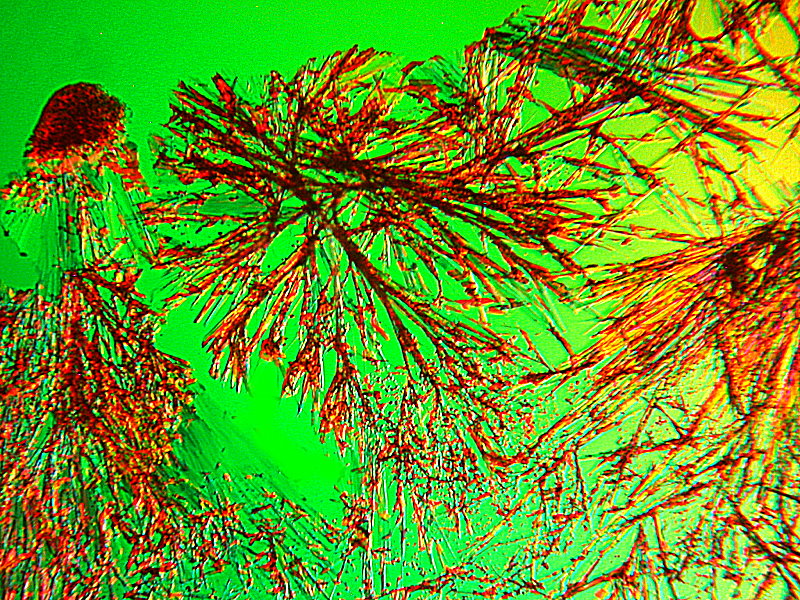
Well, that was a long exhausting journey, but with just a bit of fudging we managed to get through all the letters of the alphabet. I hope you got a bit of fun and enjoyment out of it.
All comments to the author Richard Howey
are
welcomed.
If email software is not linked to a browser, right click above link and use the copy email address feature to manually transfer.
Editor's note: Visit Richard Howey's new website at http://rhowey.googlepages.com/home where he plans to share aspects of his wide interests.
Microscopy UK Front
Page
Micscape
Magazine
Article
Library
Published in the September 2022 edition of Micscape Magazine.
Please report any Web problems or offer general comments to the Micscape Editor .
Micscape is the on-line monthly magazine of the Microscopy UK website at Microscopy-UK .
© Onview.net Ltd, Microscopy-UK, and all contributors 1995
onwards. All rights reserved.
Main site is at
www.microscopy-uk.org.uk .